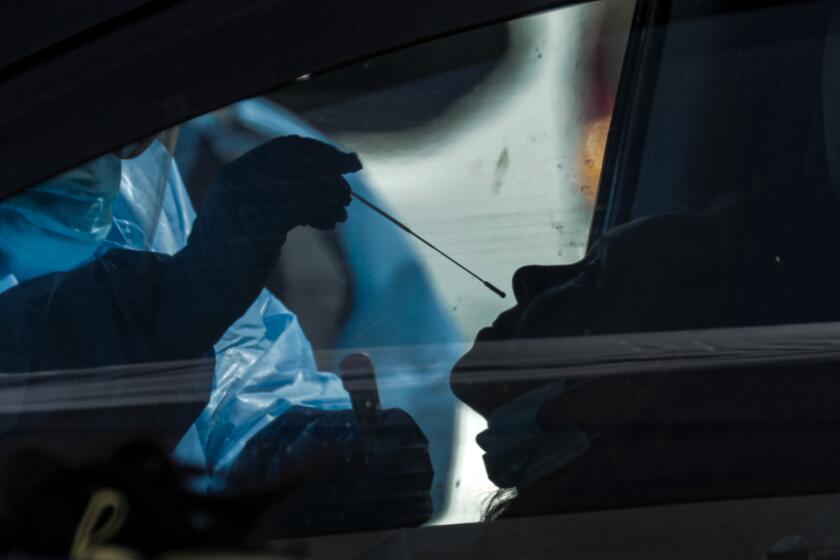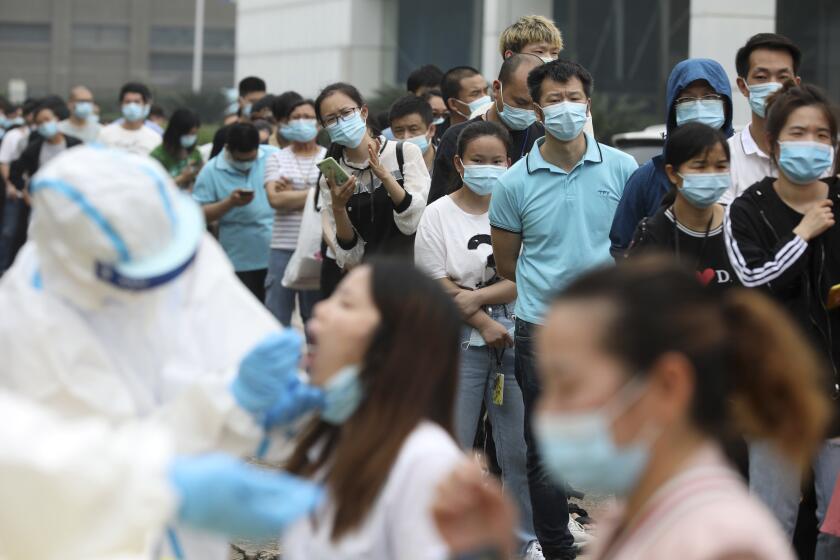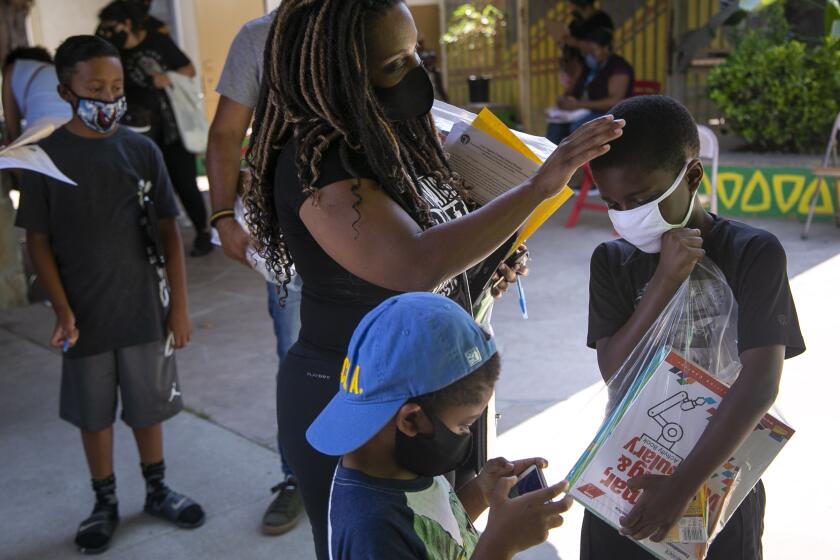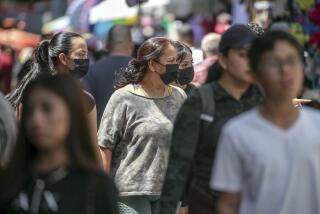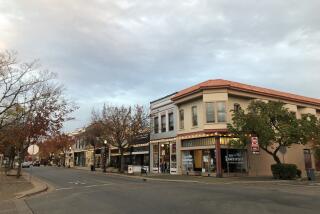Dozens of coronavirus infections traced back to Sturgis Rally
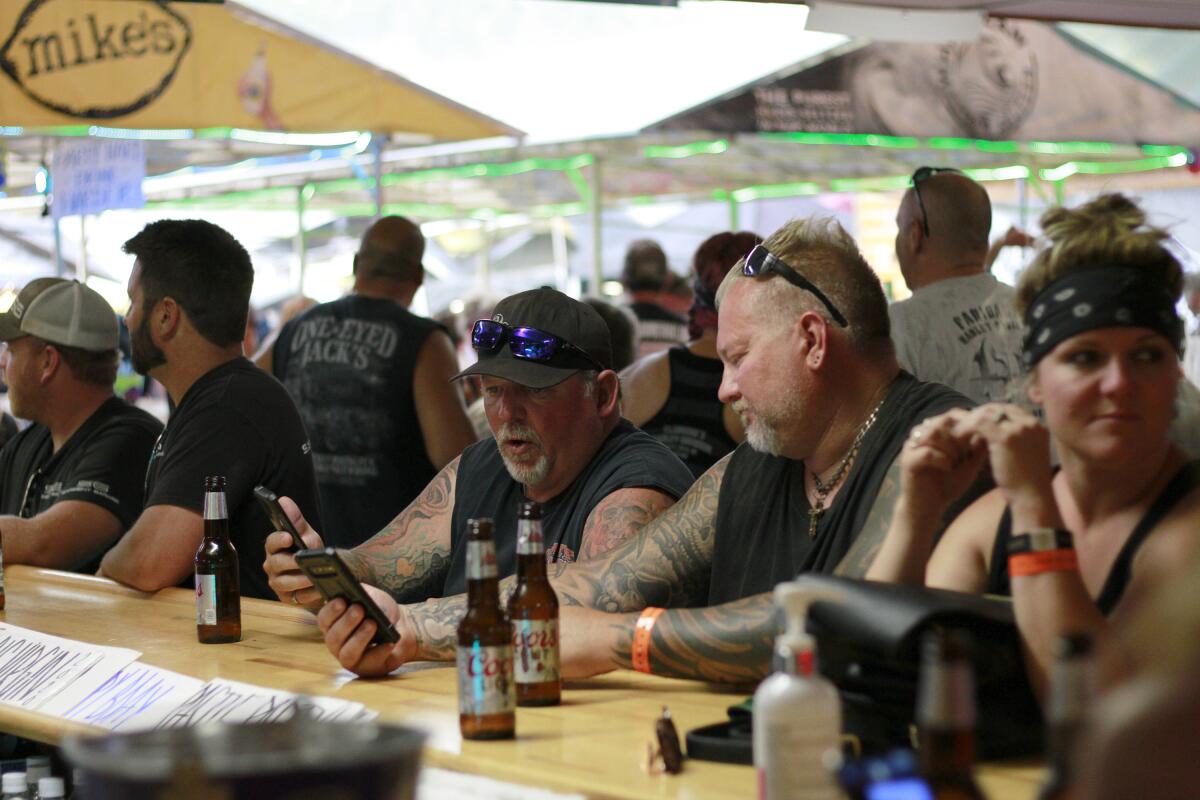
- Share via
SIOUX FALLS, S.D. — The hundreds of thousands of bikers who attended the Sturgis Motorcycle Rally may have departed western South Dakota, but public health departments in multiple states are trying to measure how much and how quickly the coronavirus spread in bars, tattoo parlors and gatherings before people traveled home to nearly every state in the country.
From the city of Sturgis, which is conducting mass testing for its roughly 7,000 residents, to health departments in at least six states, health officials are trying to track outbreaks from the 10-day rally, which ended on Aug. 16. They face the task of tracking an invisible virus that spread among bar-hoppers and rally-goers, who then traveled to over half of the counties in the United States.
An analysis of anonymous cellphone data from Camber Systems, a firm that aggregates cellphone activity for health researchers, found that 61% of all the counties in the U.S. have been visited by someone who attended Sturgis, creating a travel hub that was comparable to a major U.S. city.
“Imagine trying to do contact tracing for the entire city of [Washington,] D.C., but you also know that you don’t have any distancing, or the distancing is very, very limited, the masking is limited,” said Navin Vembar, who co-founded Camber Systems. “It all adds up to a very dangerous situation for people all over the place. Contact tracing becomes dramatically difficult.”
Health departments in four states, including South Dakota, Minnesota, Nebraska and Wyoming, have reported a total of 81 cases among people who attended the rally. South Dakota health officials said Monday they had received reports of infections from residents of two other states: North Dakota and Washington. The Department of Health also issued public warnings of possible COVID-19 exposure at five businesses popular with bikers, saying it didn’t know how many people could have been exposed.
South Dakota Gov. Kristi Noem, a Republican, has defied calls to cancel large gatherings and opposes requirements to wear masks. She welcomed the event, which in previous years brought in about $800 million in tourist spending, according to the state’s Department of Tourism.
A study of COVID-19 patients and the people they likely infected suggests the coronavirus can spread for more than two days before symptoms appear.
“I sat at a bar elbow-to-elbow with guys. No one was wearing masks,” said Stephen Sample, a rally-goer who rode back to Arizona last week.
He had visited a bar where health authorities later issued warnings — One-Eyed Jack’s Saloon — but said he had not had any COVID-19 symptoms. He discussed quarantining with his wife after he returned, but decided against it.
In a country where each state has been tasked with doing the heavy lifting of responding to the pandemic, tracing every infection from the rally is virtually impossible. But the city of Sturgis is doing what it can to head off a local outbreak by holding mass testing for asymptomatic people.
The city, which is a sleepy tourist destination for most of the 355 days of the year outside the rally dates, was a reluctant host this year. After many residents objected to the massive influx of people during a pandemic, city leaders decided to pay for mass testing from money they had received as part of federal coronavirus relief funding.
U.S. health officials say they could dramatically boost screening for the coronavirus by combining test samples in batches instead of running them one by one.
On Monday morning, Linda Chaplin drove with her husband to line up at the mass testing event in the parking lot of the Sturgis Community Center. They had left town during the rally, but the crowds that came before and after the event concerned them.
While the results from the test will take a couple days to process, the region is already seeing an increase in coronavirus cases.
“For a long time, people would say, ‘Well, do you know anybody that has COVID?’ and I would say, ‘No, I don’t, but I’m watching the news,’” Chaplin said. “Now, I do know some people that we’ve heard have COVID.”
While Chaplin said the people she knows who have been infected had not participated in the rally, she said that many residents were relieved it’s over. “Once you get your town back and once the rally is over, it feels like the end of the summer is approaching, school is starting up,” she said.
Experts say it’s going to be a tough call for figuring out how to get elementary schools reopened. Reopening elementary schools when disease transmission is too high is risky.
The local school district delayed the start of in-person classes this year in hopes it would give health officials time to contain an outbreak. The city also made coronavirus tests available for school staff, in addition to requiring city employees to get tested.
Although the city arranged to have 1,300 tests available, about 850 people have signed up for tests so far, according to Daniel Ainslie, the city manager.
Some residents, like Eunice Peck, were not concerned about the potential for an outbreak. She rented her home out to rally-goers as a way to make extra money. She had avoided the crowds that fill the city’s downtown and didn’t feel the need to get a test.
“It’s a very good thing for the town,” Peck said of the rally.
But events like Sturgis concern health experts, who see infections growing without regard to city and state boundaries. Without a nationally coordinated testing and tracing system, containing infections in a scenario like Sturgis is “almost impossible,” said Dr. Howard Koh, a professor at the Harvard School of Public Health who worked at the Department of Health and Human Services under President Obama.
“We would need a finely orchestrated national system and we are far from that,” he said. “We are really witnessing a 50-state effort with all of them going in different directions right now.”
Kris Ehresmann, the infectious disease director at the Minnesota Department of Health, on Friday advised people to quarantine for two weeks if they attended the rally.
“We’re expecting that we’re going to see many more cases associated with Sturgis,” she said.
More to Read
Sign up for Essential California
The most important California stories and recommendations in your inbox every morning.
You may occasionally receive promotional content from the Los Angeles Times.
